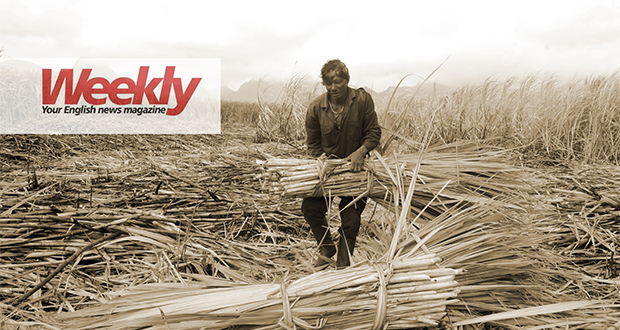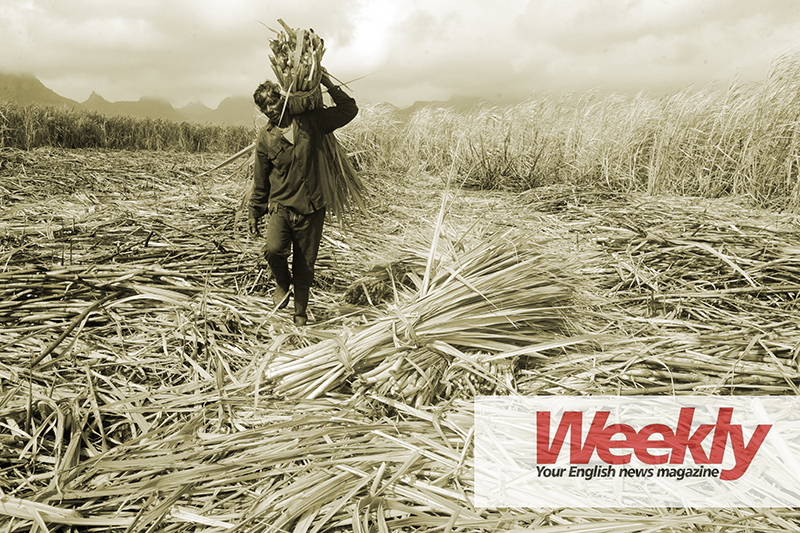Publicité
Slavery and indenture. Replacing a system or perpetuating it?
Par
Partager cet article
Slavery and indenture. Replacing a system or perpetuating it?


This article was published in Weekly No. 322 of 1 November 2018.
On 2 November 1834, the Atlas dropped anchor in Port Louis with 36 indentured labourers from Calcutta, India, aboard. Considered the first batch of indentured labourers – although the French had brought their own ‘contract’ artisan workers from India and a previous batch came under British rule in August 1829 but eventually returned to India – to start the Great Experiment by the British, these 36 “engaged” labourers were the first of almost half a million people who set foot in Mauritius to replace slave labour. One hundred and eighty-four years after the Atlas, assumptions and prejudice regarding the living and working conditions, access to property and freedom of movement of indentured labourers remain. Weekly talks to historians about the extent of the paradigm shift between slavery and indenture. It turns out not everything is so clear-cut...
Indenture was introduced to Mauritius by the British authorities precisely with a view to preempt the abolition of slavery in 1835, its subsequent four-year apprenticeship period and the much anticipated – by both the sugar plantocracy and the British authorities – lack of labour to develop the island.
For historian Jocelyn Chan Low, the most basic difference between slavery and indentured labour is the fixed-term contract labourers had, where their wages and working conditions were laid out. Vijaya Teelock, historian at the University of Mauritius, concurs that while slavery was legally sanctioned – slaves were forced to work by such legislation as the Code Noir, failure to comply resulting in physical violence being resorted to – indenture offered better legal protection to labourers despite their still harsh working conditions. “Primordially, indentured labourers were not the property of their employers.”

Nonetheless, Chan Low concedes that contracts were not always respected by employers. For instance, the local British authorities found themselves under severe pressure when the British government of India prohibited emigration to Mauritius between 1839 and 1942, following reported abuses by returning immigrants. In Lured Away: The Life History of Cane Workers in Mauritius, Huguette Ly Tio Fane Pineo recounts how, besides unfair treatment on the sugar estates such as the delayed or non-payment of wages or fraud, “little difference” was made “between passengers and bags of rice”. “Immigrants were lodged in the lower deck among bales of rice,” she writes. The recourse to kidnappings in India by duffadars, junior officers in the Indian army under British rule, to procure indentured labourers, the harsh conditions of the journey to Mauritius, the precarious living and working conditions and the on-going pro-slavery mentality of the ruling sugar plantocracy are reminiscent of the inhuman conditions in which slavery was practised in Mauritius. Yet, for Chan Low, indenture stood out, as the mere reporting of abuses was “impossible” under slavery.
“Out of the nearly half-a-million ‘engaged’ labourers who came to Mauritius, only a third stayed. One-third returned to their homeland, mainly India, whereas the final third did not survive.”
However, Teelock claims that the living and working conditions during slavery and indenture cannot be compared as the economic systems were inherently different during the two eras. The small sugar plantations of the 18th century made way in the 19th century for larger estates following the sugar boom in 1833, which Ly Tio Fane Pineo describes as the “most extravagant speculation the country had ever known”.
Access to property
Access to property constitutes another aspect where indenture departs from slavery, according to Chan Low. “The Mauritian sugar industry used to export its whole local production to the UK,” he says. “With the advent of free trade in the UK in the 1840s, the latter started importing sugar from all over the world,” he adds. “Mauritian sugar estate owners had to resort to new production processes and new export markets such as South Africa and India to compensate for the loss in monopoly.” The historian posits that landlords realised that selling plots of land under sugarcane cultivation to small planters and collecting revenues from the latter would be more profitable, hence the emergence of the grand morcellement.
Teelock nonetheless wishes to debunk the myth that all indentured labourers received or bought a plot of land. “Just like during slavery, where only a minority of government-owned slaves received plots of land, in the area of Réduit for example, a minority of indentured labourers had access to property,” states Teelock. “Bear in mind that out of the nearly half-a-million ‘engaged’ labourers who came to Mauritius, only a third stayed, one-third returned to their homeland, mainly India, whereas the final third did not survive.”
“The charge of rogue and vagabond is still pressed mercilessly against sex workers and people against whom no other charges can be levelled.”
On another point, slavery saw the introduction of mostly male slaves to the island which “split the family model” according to Chan Low. The status quo prevailed with indenture. However, with the emergence of settlements following the process of grand morcellement, families were reconstituted and systems of caste and religions were created in Mauritius. Ly Tio Fane Pineo claims that women performed “lighter work than men such as weeding, digging holes or working in the sugar house”. She adds that the women’s presence was a source of “comfort” to their husbands as the former made it easier for immigrants to save money and to “retain their customs, language and religion”.

Sirdar vs slave driver
A character typical of indenture and whose shadow still hovers over present-day sugarcane fields is the sirdar or overseer. The sirdar would be someone from the same group of workers he is leading. He would accompany the group to the work site and command respect and authority. For Chan Low, appointing a sirdar occasionally posed problem as “you had to find a sirdar of the same caste as the people he would supervise”. If the sirdar is of a lower caste, his authority would be challenged. Furthermore, sexual harassment of women labourers by sirdars led to cases of suicide and murder by spouses.
During slavery, the sirdar took the form of a slave driver (commandeur in French) who, according to Chan Low, would usually be a white settler but could sometimes be a slave who had been tasked to supervise a group of fellow slaves. “Slaves were not a homogenous group, as it is often assumed. You had an economic hierarchy,” concurs Teelock.
Vagrancy and freedom of movement
Vagrancy is considered a legacy of slavery. For Teelock, “Every economic system aims to find cheap and disciplined labour.” Thus, the concepts of marronage during slavery and vagrancy during indenture both sought to control the movement of slaves and indentured labourers. In Forbidden Freedom: The Experience of the Vagrants of the Vagrant Depot of Grand River North West and of the Other Vagrants in British Mauritius, c.1879-1905, Satyendra Peerthum, researcher at the Aapravasi Ghat Trust Fund, notes that under colonial laws, a vagrant was someone with no ‘valid pass’, who did not have a permanent place of abode or who was not working under a labour contract.
Teelock adds that through vagrancy laws, the colonial authorities prevented “free labour competition” whereby labourers would go round estates to assess which one had the best working conditions. The most substantial remnants of vagrancy heritage can be found in Grand River North West where the vagrant depot lies. Legally, the concept of vagrancy still survives in the Criminal Code under the terms ‘idle’ and ‘rogue and vagabond’. Rama Valayden, who, as attorney general, unsuccessfully worked on amending the law to scrap the idle and rogue and vagabond charges in 2009, still believes that these remnants of the Vagrancy Act “do not serve any role in a modern State”. “The charge of rogue and vagabond is still pressed mercilessly against sex workers and people against whom no other charges can be levelled,” says the lawyer, who reckons that the proper amendments to the Criminal Code could easily be recommended by the Law Reform Commission. Valayden finally believes that the vagrant depot ought to be given a more prominent role in educating the younger generation on the struggles for freedom of movement in Mauritius.
Indenture can thus be looked at as a professed attempt by the colonial authorities to do away with the horrors of slavery. By regulating indenture, the ‘engaged’ labourers were given a legal status slaves did not have. Yet, the nature of the work and the living conditions prevailing in Mauritius at the time made it almost impossible for indentured labourers to be treated any differently from slaves.
For more views and in-depth analysis of current issues, Weekly magazine (Price: Rs 25) or subscribe to Weekly for Rs110 a month. (Free delivery to your doorstep). Email us on: weekly@lexpress.mu
Publicité
Publicité
Les plus récents






